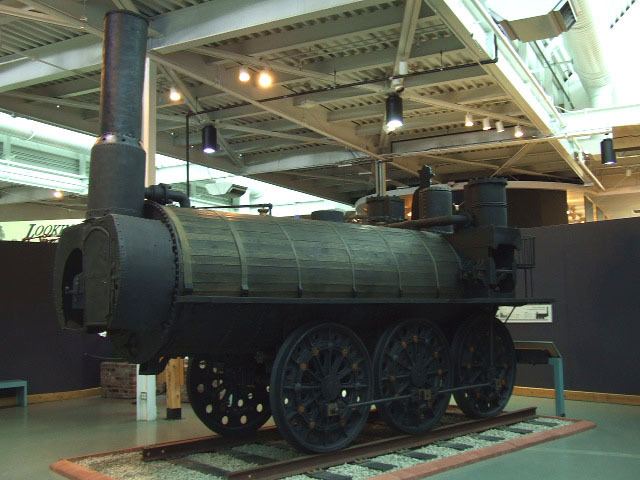 | ||
The first Canadian railway, the Champlain and St. Lawrence Railroad, was opened in 1836 outside of Montreal, a seasonal portage railway to connect river traffic. It was followed by the Albion Railway in Stellarton, Nova Scotia in 1840, a collier railway connecting coal mines to a seaport.
Heavy expansion of the rail system did not get under way until the Guarantee Act of 1849 that guaranteed bond returns on all railways over 75 miles. This led to rapid expansion of railway in the Canadas, sometimes excessive growth as uneconomic lines were built since the government guaranteed profits.
This proved disastrous for government finances, however, and the Canadas were all but bankrupted by the subsidies. The largest rail project of this period was also a disaster. The Grand Trunk Railway linking Montreal to Sarnia was finished in 1860, but was vastly mired in debt. In exchange for bailing out the company the government escaped its guarantee on the railway bonds.
Canadian confederation was in part brought about by the railways. The local governments had all but emptied their treasuries building railways, and a new and more stable method of financing them was required. It was also believed that union would allow for the needed construction of railroads linking British North America. The Maritimes joined largely because of promises to build the Intercolonial Railway, and British Columbia only because of a promise to build a transcontinental railroad.
The government had learnt its lesson and these railways were not funded by guarantees. Rather, the construction of the Intercolonial was fully controlled by the government under the skilled direction of Sir Sandford Fleming.
The railway to the Pacific, the Canadian Pacific Railway, was financed by private funds and through massive land grants in the Canadian prairies, much of it of little value until the railway arrived, $25 million in cash and a guaranteed monopoly. The railway, an engineering marvel that was then the longest in the world, was completed in 1885 to great fanfare.
The booming Canadian economy after 1900 led to plans to build two new transcontinental railways. The Canadian Northern, a successful system covering the northern part of the prairies, and the Grand Trunk (through its Grand Trunk Pacific subsidiary) both launched ambitious plans to expand. The government at first encouraged the two to come to some arrangement and only have one new line, but in the end no agreement was made and the government supported the expansion of both lines. The federal government itself built the National Transcontinental Railway, a line from Moncton to Winnipeg, passing through the vast and uninhabited hinterland of the Canadian Shield.
This aggressive expansion proved disastrous when immigration and supplies of capital all but disappeared with the outbreak of the First World War. The Canadian Northern, Grand Trunk Pacific, and Grand Trunk were nationalized by the federal government, which absorbed the debt of over two billion dollars. All three railways, along with the Canadian Government Railways (formed by the Intercolonial, National Transcontinental, and several smaller lines) were then merged into the Canadian National Railways in 1923.
The years after the First World War saw only moderate expansion of the rail network and the age of the great railways were over in Canada. The automobile provided strong competition by the 1920s, and after the Second World War most passenger service was lost to airlines. During the post-war period several large resource lines were opened in Quebec, Labrador, and British Columbia – several of which are not directly connected to the main North American network.
In 1978 the government created Via Rail which took over all national passenger service in the country. In November 1995 the government privatized CN.
